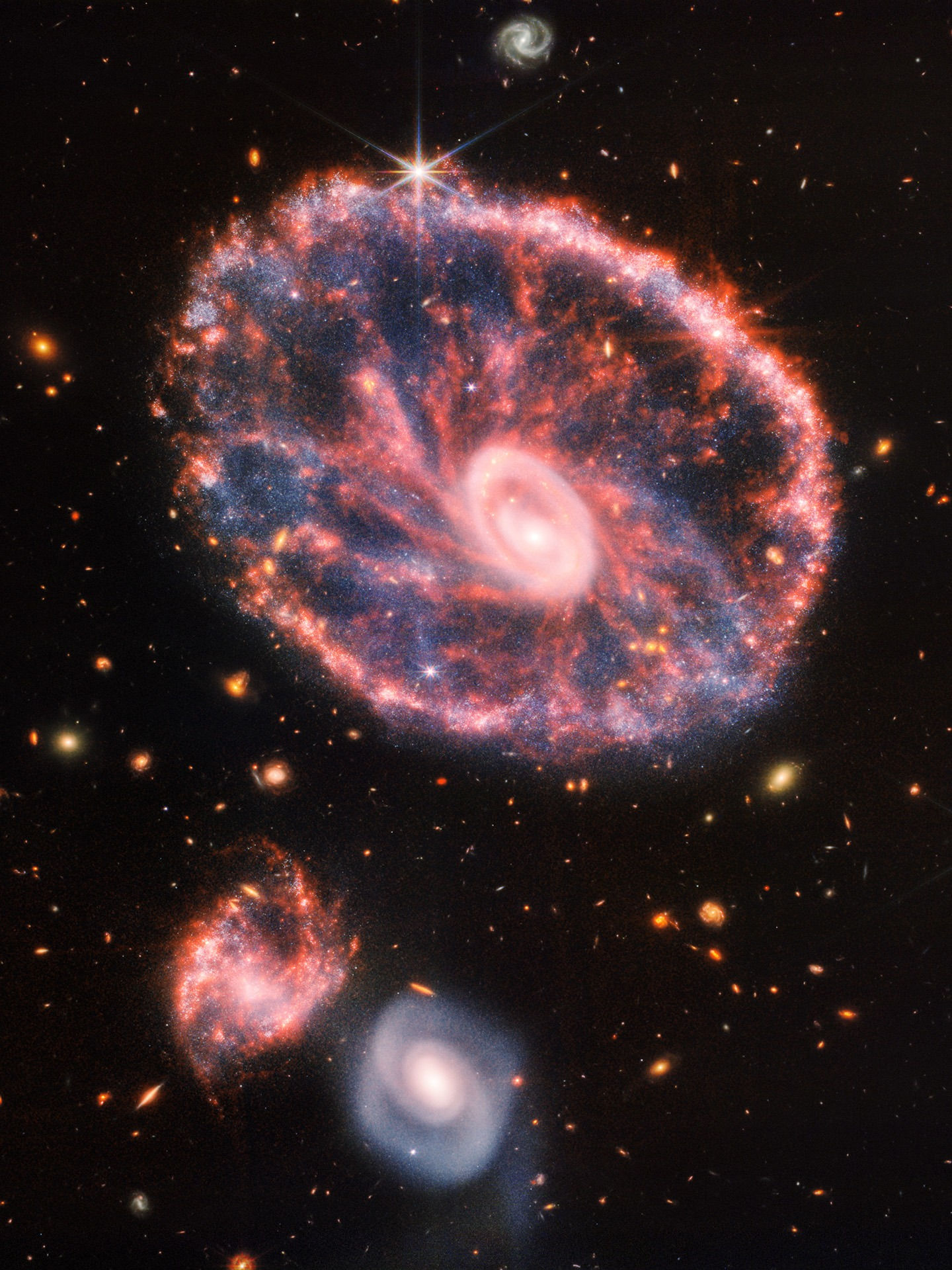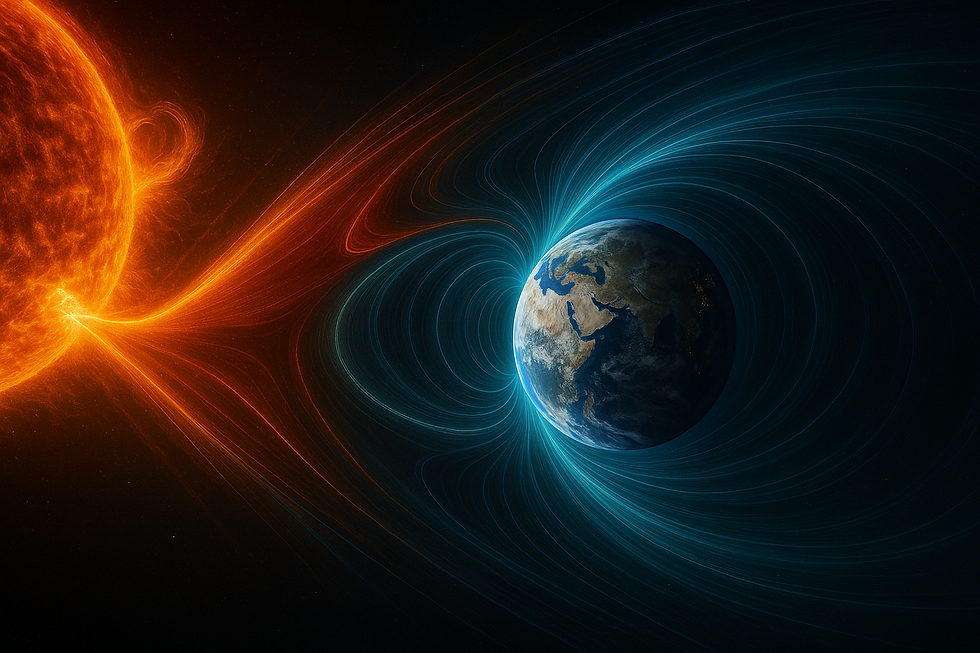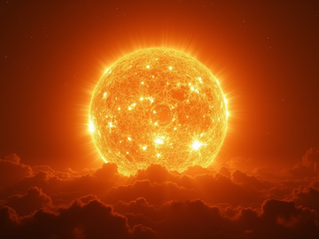Where is the Center of the World?
- Phystroid

- Apr 28, 2023
- 8 min read
Updated: Apr 29, 2023
For centuries, humans have been fascinated by the idea of finding the center of the world. Some have searched for a physical location, while others have sought a spiritual or metaphorical center. However, the concept of a center of the world is a subjective and elusive one, as it depends on the perspective and beliefs of the individual.

From a geographical standpoint, there are various ways to determine the center of the world. One method is to use the geographic center, which is the point at which a theoretical flat map of the world would balance perfectly. According to this definition, the center of the world would be near the intersection of the equator and the prime meridian, which is located in the Gulf of Guinea, off the coast of West Africa.

Another method is to use the centroid, which is the geometric center of the Earth's landmass. The Centroid is defined as the average position of all the points of an object. This means that a two dimensional flat surface shape balances perfectly on its centroid point on the tip of a pencil.

The exact location of the centroid can vary depending on the method used for calculation and the data used as input. According to some calculations it lies near the eastern coast of Romania.

However, these definitions of the center of the world are purely mathematical and have little practical significance. In reality, the concept of a center of the world is much more complex and can encompass a wide range of meanings. From a cultural and historical perspective, different societies have had their own centers of the world, based on their beliefs and traditions.

For example, ancient Greeks believed that the center of the world was the sacred site of Delphi. Delphi is a site of great importance in ancient Greek religion and cosmology. This place is considered to be the center of the world and the most important religious center of the ancient Greeks. It is where the oracle of Apollo resided and it is believed that the oracle could communicate with the gods themselves and provide guidance and answers to all those who visited Delphi. The temple at Delphi was dedicated to Apollo, the god of truth, and the goddess Athena.

The ancient Mayan civilization believed in the sacred city of Teotihuacan, located in present-day Mexico. According to Mayan mythology, the great goddess Coatlicue was responsible for creating the earth and the heavens. She was said to have given birth to the sun and the moon, who were sent to populate the world. The Mayans believed that Teotihuacan was the center of the universe, and it was the site of many important rituals and sacrifices. Teotihuacan was a thriving city for over a thousand years and is still being studied by archaeologists today.

Mount Meru is a mythical mountain in Hindu mythology and is considered the center of the world. According to Hindu texts, Mount Meru is a tall, rocky, and snowy mountain that rises up to the heavens. The top of the mountain is said to be the realm of the gods, while the base of the mountain rests in the bottom of the ocean. Mount Meru is surrounded by seven rivers, each representing a different aspect of the universe. The top of Mount Meru is believed to be the home of the gods, while the base of the mountain is believed to be the realm of the supernatural and demonic.

Yggdrasil is a mythical tree in Norse mythology that is said to be the central and most important feature of the world. It is a giant ash tree that connects all nine realms of the world, and it is said to be so large that its branches extend across the whole world. Yggdrasil holds together the different worlds and realms of the Norse cosmos, and it is said to be a place of great power and magic. In Norse mythology, Yggdrasil is a symbol of continuity and the cyclical nature of time.

In many indigenous cultures, the center of the world is the place where the spirits of ancestors and gods reside. For the Navajo people of North America, the center of the world is the Four Corners region, where the states of Arizona, Colorado, New Mexico, and Utah meet. The Navajo tribe of Native Americans traditionally view the Four Corners region as the center of the world. The Four Corners is a sacred space for the Navajo, and it is where the tribes believe that the world was created. The Four Corners is also a place of spiritual and cultural significance for the Navajo, and it is believed to be a gateway to the spirit world. The Navajo also believe that the Four Corners is the location of important religious sites and ceremony grounds. The region was once the center of an incredibly complex and influential civilization that flourished over several centuries throughout the entire Southwest. The Ancestral Puebloans, along with other tribal groups, occupied this land and inhabited sites such as Mesa Verde, Chaco Canyon and Canyon de Chelly.

In Australia, the Uluru rock formation is considered a sacred site and the center of the world by the Anangu people. Uluru, also known as Ayers Rock, is a massive sandstone rock formation located in the heart of Australia. It is not only a natural wonder, but it is also considered a sacred site by the Aboriginal people. The Uluru rock formation stands high above the rest of the landscape and is believed to be the center of the world by the Anangu people. The rock is considered to be a place of great spiritual and cultural importance, as it is said to contain the spirits of their ancestors and to be a place where their creation stories took place.
For centuries, humans have been fascinated by the idea of finding the center of the universe. Ancient civilizations, such as the Greeks, believed that the Earth was at the center of the universe, with the stars, planets, and other celestial bodies revolving around it. This geocentric model dominated scientific thought for centuries until the advent of the heliocentric model, which placed the sun at the center of the solar system.
The heliocentric model was first proposed by the Polish astronomer Nicolaus Copernicus in the 16th century. His theory challenged the prevailing belief that the Earth was at the center of the universe and suggested that it was the sun around which the Earth and other planets revolved. This was a revolutionary idea that sparked a paradigm shift in astronomy and set the stage for further discoveries about the universe.
The existence of other galaxies beyond our own Milky Way was first theorized by the astronomer Thomas Wright in the 18th century, based on his observations of the appearance of the Milky Way. The idea was further developed by William Herschel in the late 18th century, who made detailed observations of the structure and distribution of stars in the Milky Way and other galaxies using his telescope. These early astronomers provided the groundwork for later discoveries by Edwin Hubble in the early 20th century. Hubble observed the redshifts of many other galaxies in the universe, each with billions of stars like our own. This discovery revolutionized our understanding of the static universe and shattered the notion that our galaxy was the center of the universe.
The discovery of other galaxies led to the development of the Big Bang theory, which proposed that the universe began as a single point of infinite density and exploded outward to create the universe we see today. This theory explained the observed expansion of the universe and provided a comprehensive explanation for the origin and evolution of the cosmos. However, recent discoveries suggest that our Big Bang may not have been the only one.
Since the universe is finite and flat, then it must have some sort of boundary or edge, and consequently also a center. However, what we actually observe is that apparently there is no boundary, in the sense that we appear to be in the center of the observable universe. One possible explanation is that our observed universe is only a small patch of a much larger finite and flat universe with boundaries, and that there are beings in other places of the Universe that might actually be able to observe the edges of the universe. This means that they would observe a non homogeneous and isotropic distribution of galaxies in the night sky.

However there is a second explanation for a finite and flat universe, that doesn't have boundaries, edges or a center: A flat universe means that the geometry of space is Euclidean, meaning that parallel lines never meet and the angles of a triangle add up to 180 degrees. However, this on itself does not imply that the universe is infinite or has no boundaries. The universe could also have a non-trivial topology, such a Klein bottle, that makes it finite but still flat and without boundaries. A non-trivial topology does not necessarily require extra spatial dimensions. It is possible to construct flat spaces with different topologies in the same number of dimensions, such as a torus or a Klein bottle in two dimensions. In this case we can expect the universe to be flat, finite and without boundaries.

Currently, there are three possible shapes for a finite universe: flat, closed, and open. A flat universe is one where space is Euclidean and parallel lines never meet. A closed universe is one where space is curved like the surface of a sphere, and parallel lines eventually converge. An open universe is one where space is negatively curved like a saddle, and parallel lines diverge. Observations of the cosmic microwave background radiation, as well as other cosmological data, suggest that the universe is flat with a high degree of accuracy. However, it is fair to say that our physics theories are still in their infancy and a lot more research is required to conclusively answer these questions.

In general relativity, the curvature of space is related to the distribution of matter and energy in the universe. A net amount of energy in a particular region of space can cause space to curve and create a positive or negative curvature. However, observations suggest that the total energy of the universe is zero, meaning that the positive energy associated with matter and radiation is exactly balanced by the negative energy associated with gravitational fields (gravitational potential energy). In this scenario, space would be expected to be flat, and the universe consistent with the energy conservation principle. This is consistent with observations of the cosmic microwave background radiation, which provide strong evidence for a nearly flat universe.

In conclusion, the search for the center of the universe has been a long and fascinating journey that has led to many discoveries and paradigm shifts in our understanding of the cosmos. From the ancient Greeks to modern cosmologists, our concept of the universe and its center has evolved and expanded. While we may never find a definitive answer to the question of the center of the universe, each discovery and new theory brings us one step closer to understanding the mysteries of the cosmos. The search for a central location or point in time and space has long been a fascination for humans, reflecting our desire to understand our place in the universe and seek a deeper meaning. While such a center may not exist in a physical sense, it can hold significant spiritual and cultural importance to individuals and societies. The concept of the center of the world can be traced back to ancient times and cultures and continues to inspire philosophical and scientific exploration.












































































































Comments